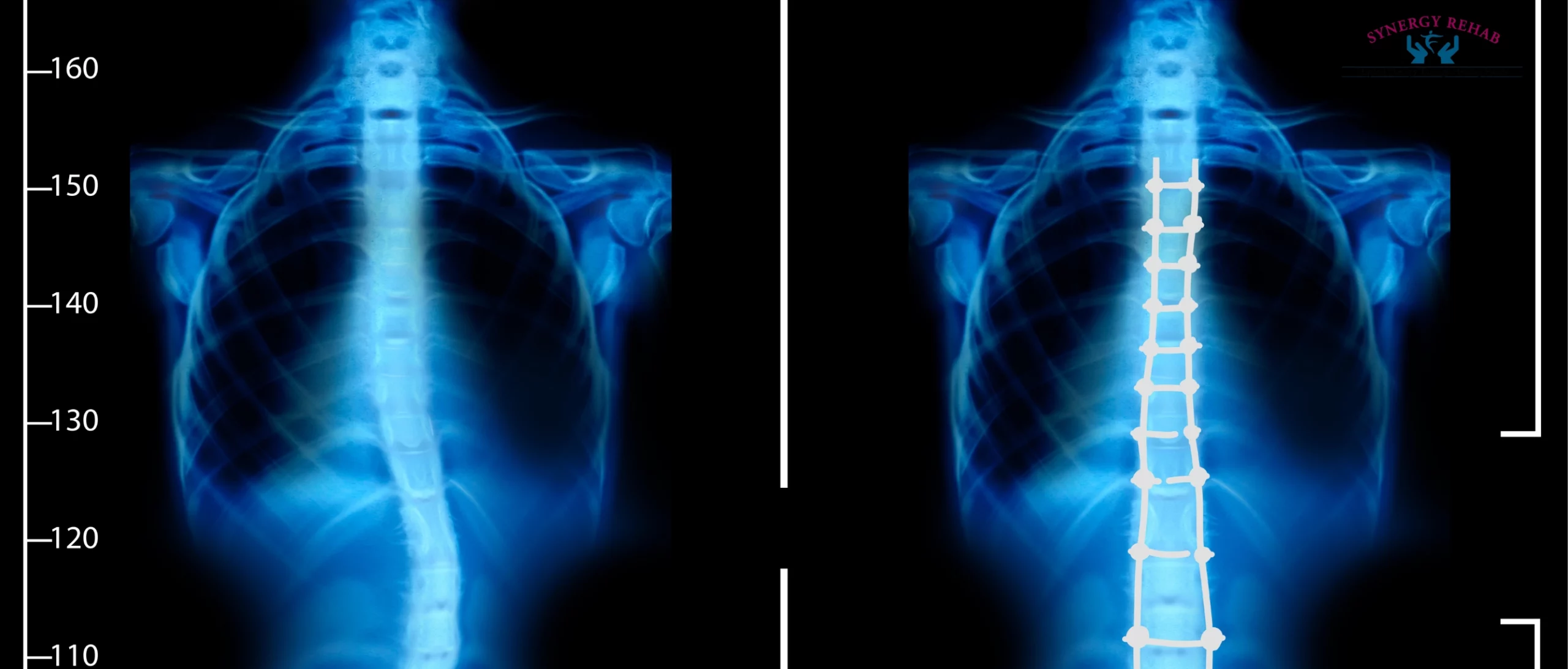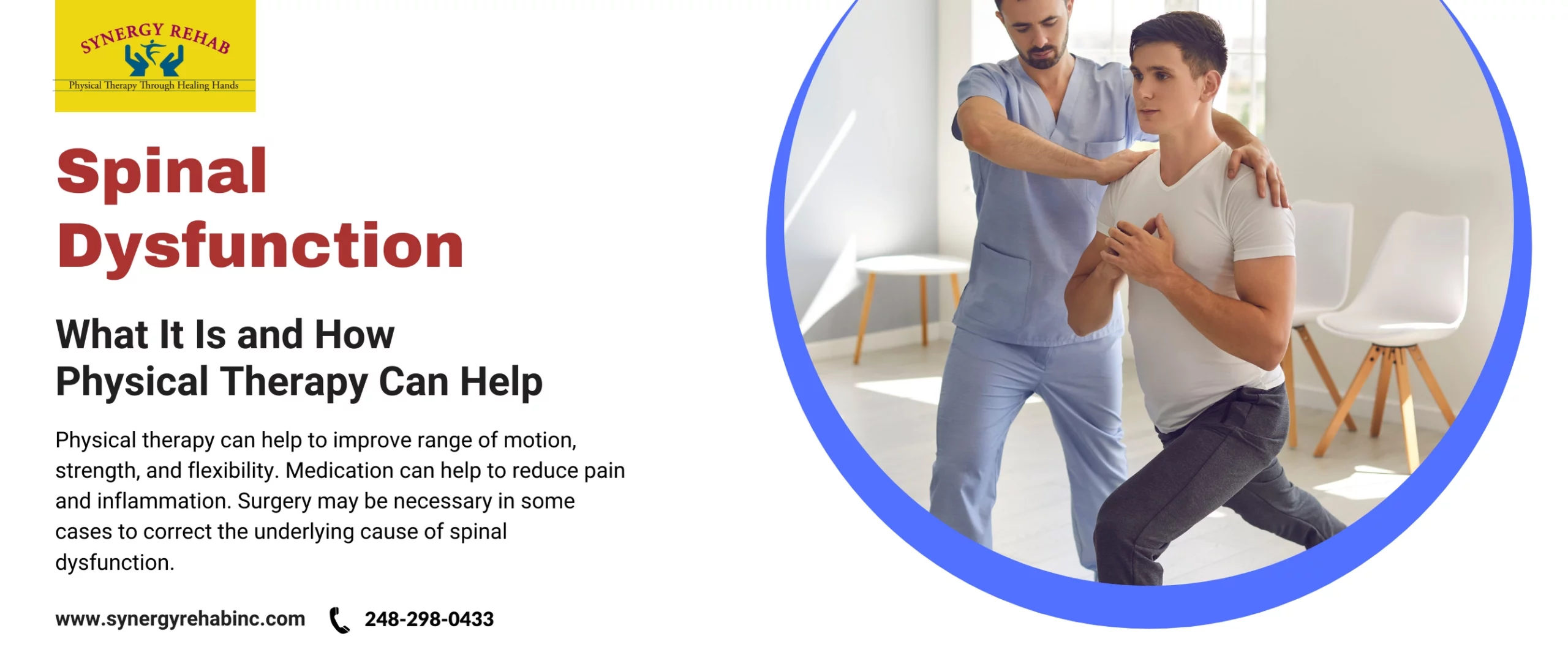Spinal dysfunction is a condition that occurs when the spine is not functioning properly. This can lead to pain, stiffness, and decreased range of motion. Various factors can cause spinal dysfunction, including injury, overuse, poor posture, and underlying medical conditions.
There are many different signs and symptoms of spinal dysfunction. Some of the most common include:
- Back pain
- Neck pain
- Sciatica
- Headaches
- Numbness or tingling in the arms or legs
- Weakness in the arms or legs
- Difficulty walking or standing
- Stiffness in the back or neck

If you are experiencing any of these symptoms, it is important to see a doctor or physical therapist to get a diagnosis and treatment plan.
Before we go on to understand how physical therapy can help the condition, it is important to gain a better understanding of the condition.
- Spinal dysfunction is a common condition that affects people of all ages.
- The spine is made up of 24 bones called vertebrae. These bones are stacked on top of each other and held together by ligaments and muscles.
- The spine is responsible for supporting the body and allowing us to move.
- Spinal dysfunction can occur when the spine is not aligned properly or when the muscles and ligaments are not functioning properly.
- Spinal dysfunction can be caused by various factors, including spinal injuries, overuse, poor posture, and underlying medical conditions.
There are many different types of spinal dysfunction, including:
- Disc herniation: This occurs when the soft disc between two vertebrae bulges out and presses on a nerve.
- Spondylolisthesis: This occurs when one vertebra slips out of alignment with the vertebra below it.
- Spondylosis: This is a degenerative condition that causes the bones in the spine to become misshapen and lose their flexibility.
- Scoliosis: This is a curvature of the spine that can be either structural (caused by a problem with the spine itself) or functional (caused by an underlying medical condition or muscle imbalance).

Spinal dysfunction can be diagnosed with a physical exam and imaging tests, such as X-rays, MRIs, or CT scans. Treatment for spinal dysfunction typically includes physical therapy, medication, and sometimes surgery. Physical therapy can help to improve range of motion, strength, and flexibility. Medication can help to reduce pain and inflammation. Surgery may be necessary in some cases to correct the underlying.
Physical therapy in Southfield is a great way to manage spinal dysfunction. Physical therapists can help you to improve your range of motion, strength, and flexibility. Experienced physical therapists can teach you exercises and stretches that you can do at home to help maintain your progress.
Here are some ways physical therapy can help manage spinal dysfunction:
Range of motion: Physical therapists can help you to improve your range of motion by stretching and strengthening the muscles around your spine. This can help to reduce pain and stiffness, and it can also make it easier to move around.
Strength: Physical therapists in Southfield work with you to develop a plan that can improve your strength by using exercises that target the muscles in your back and neck. This can help to support your spine and reduce the risk of further injury.
Flexibility: Physical therapists can help you to improve your flexibility by stretching the muscles in your back and neck. This can help your body to become relaxed more stretchable, and reduce pain.
Exercises and stretches: Physical therapists can teach you exercises and stretches that you can do at home to help maintain your progress. These exercises can help to keep your spine strong and flexible, and they can also help to prevent further injury.

In addition to physical therapy, there are other things you can do to help manage spinal dysfunction. These include:
- Maintaining a healthy weight
- Getting regular exercise
- Sleeping on a firm mattress
- Avoiding prolonged sitting or standing
- Using proper lifting techniques
- Stretching regularly
Parting Thoughts
Physical therapy is an effective and workable solution to the spinal problems that may be hampering your day-to-day life. You have to take the right steps to reach the solution.
If you are experiencing spinal dysfunction, Synergy Rehab Inc. can help.
Our experienced physical therapists in Southfield will work with you to develop a personalized treatment plan to help you get back to your active lifestyle. Book your appointment today and meet our caring and compassionate physical therapist in person! With proper care, most people with spinal dysfunction can improve their symptoms and get back to their active lifestyle.



